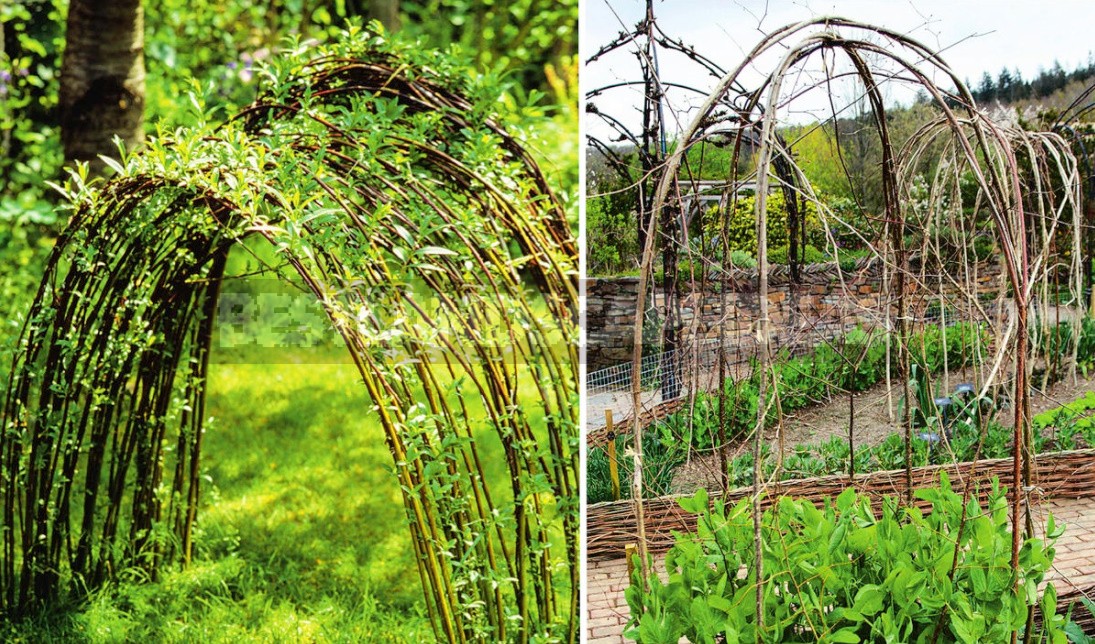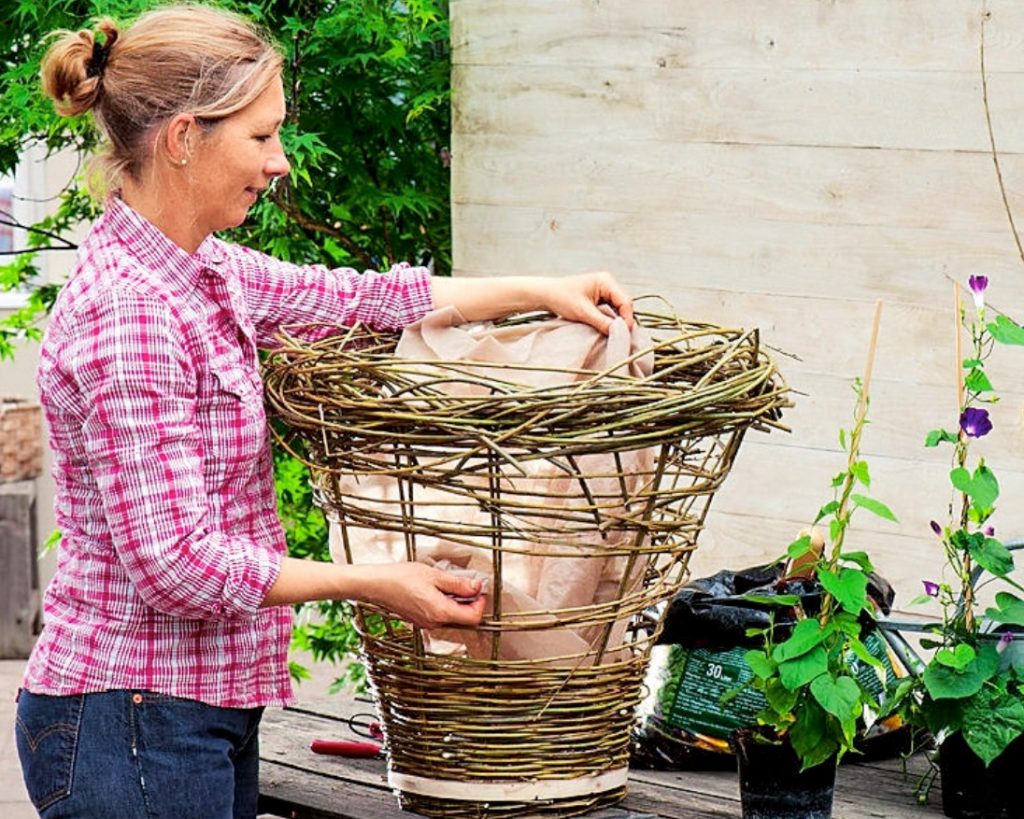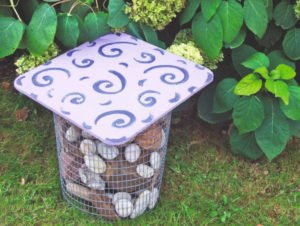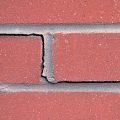Since ancient times, baskets, dishes and furniture have been woven from the vine. Thicker branches are used to make wattles and supports for climbing plants. Such elements simply fit perfectly into the gardens in a rustic or natural style. With a little practice, you will be able to make real works of art yourself.
Willow branches are best suited for this, but you can also use grape vines, and young flexible shoots of other plants.
Choosing the material for weaving
It is the source material that plays a decisive role. One – and two-year-old willow branches are best suited for weaving. As a rule, they are cut off in early spring — then they are the most flexible. By and large, willow can be cut all year round, but the material will differ in flexibility.
Willow shoots collected in early spring and not used immediately, as well as cut in summer, autumn and winter, must be soaked and steamed before use, so that they become more elastic. To do this, put the vine under pressure in a trough with water for 5-15 days (periodically change the water). The twigs will become even more flexible if, after soaking, they are boiled over low heat in the same trough.

Important: the vine prepared in this way retains flexibility for several days.
What else is suitable for wicker crafts
- You can cut hazel-it gives a lot of growth every year.
- In the regions where grapes are grown, it is also easy to stock up on the necessary material.
- For decorative purposes, it makes sense to weave clematis lashes into products.
- Young shoots of Cornus and Prunus are also suitable for vine weaving — they should be smooth, without any branching.
- Good options are reeds and cattails (note that they can not be soaked for a long time, otherwise they will give a strong shrinkage after drying).
But whatever you choose, the vine should be flexible, if possible, it should be used immediately after cutting. If this is not possible, you can put the twigs in a shady place for a while, and soak them on the eve of work, as well as willow twigs.
Tip: always choose thicker twigs for the frame, and thin ones for the weaving itself.
We weave a basket of willow twigs
1. The bottom of the basket is a wooden circle, along the edge of which holes are drilled at the same distance from each other. The diameter of the holes should be from 8 mm or more, it all depends on the thickness of the rods. Insert the willow rods into the holes. If they are thin, you can thread 2-3 pieces.
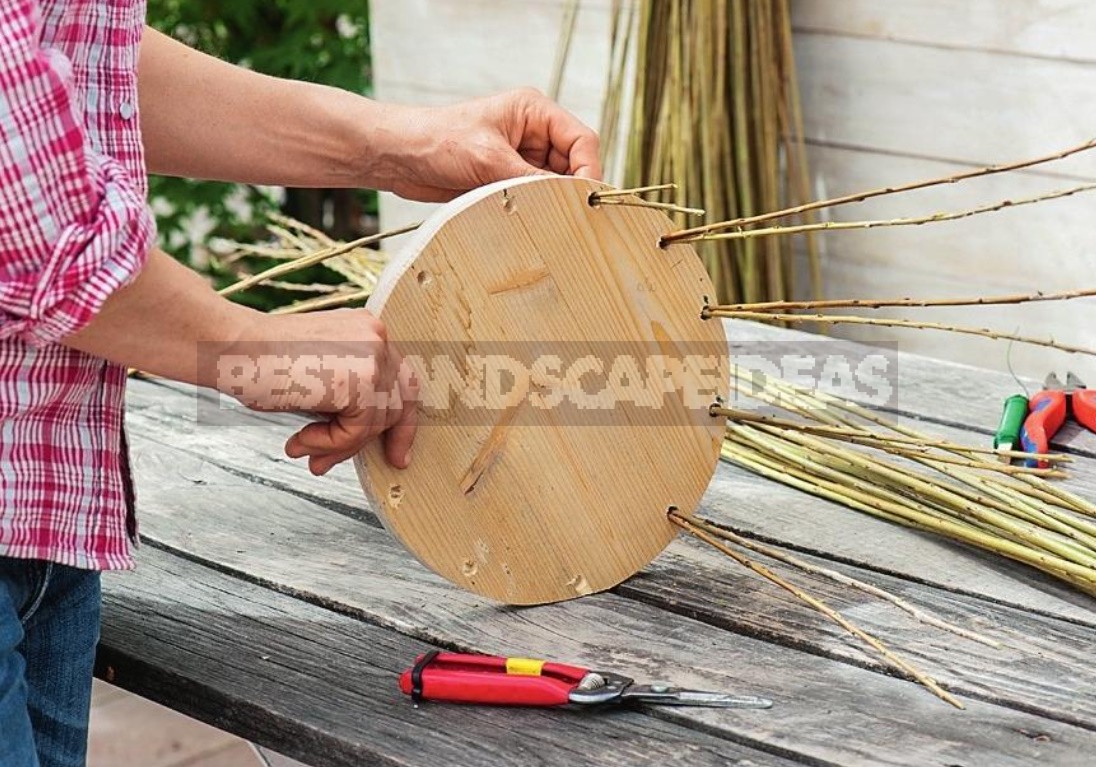
2. Pull all the bars through the holes 20-30 cm up. On the reverse side, twist the ends together so that the wooden circle is firmly fixed. Cut off the protruding ends of the rods. Turn the base over with the weave down. Make sure that the structure is stable.

3. Cut one twig lengthwise. Roll the half into a ring and tie it with a wire at the intended height of the basket to the rods sticking up, which form the frame of the basket — so you will fix the structure, and this will make the weaving uniform.

4. Now we weave the basket itself: one by one, we thread the rods zigzag through the frame.
5. When gardening with curly annuals, the basket visually looks more spectacular if its walls are not tightly braided in some places. To do this, leave open areas in the middle of the container, through which the shoots will later be able to hang picturesquely.

6. When you reach the template twig, remove it and weave a bend from the frame rods (the upper edge of the basket). Line the basket with non-woven fabric to a tightly braided area.
7. Fill the substrate to the edges of the non-woven material.

8. Water the plant well (in this case, the tricolor ipomoea) and transplant it into the basket. If possible, carefully thread some shoots through the loose weave and pour the green pet again.
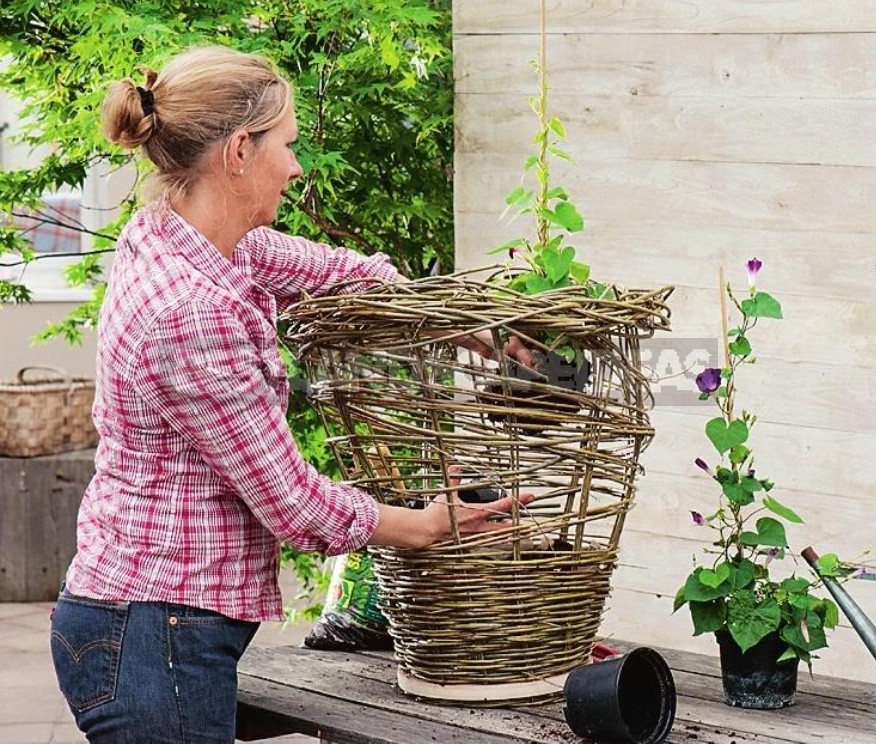
Important: the beginning of spring is the time to cut thin willow twigs, because it is then that they are most flexible and do not need additional processing, unlike those cut in summer, autumn or winter.
Hazel Obelisk
1. A wooden board with holes drilled at the same distance will help to evenly distribute the thick branches that form the frame of the obelisk. At the same time, such a base gives stability to the structure, and it will be easier to weave.
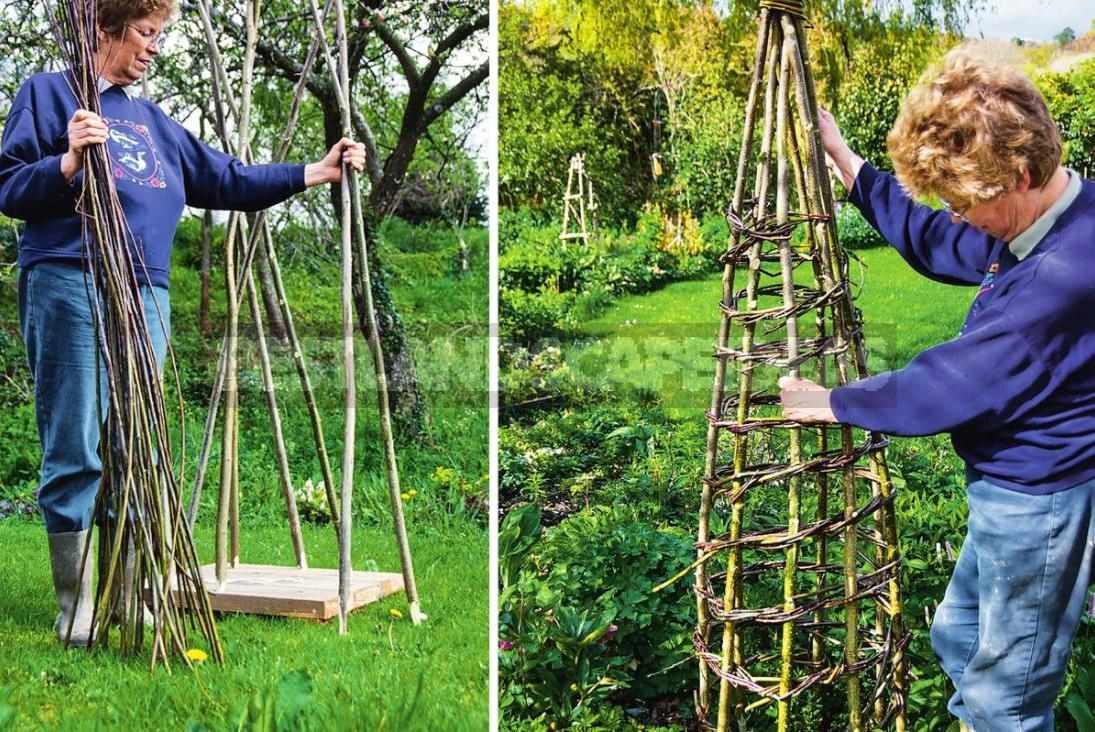
2. It is desirable to sharpen thick branches for the frame on one side, then later it will be easier to install the obelisk. While the pointed ends are placed in the holes in the board.
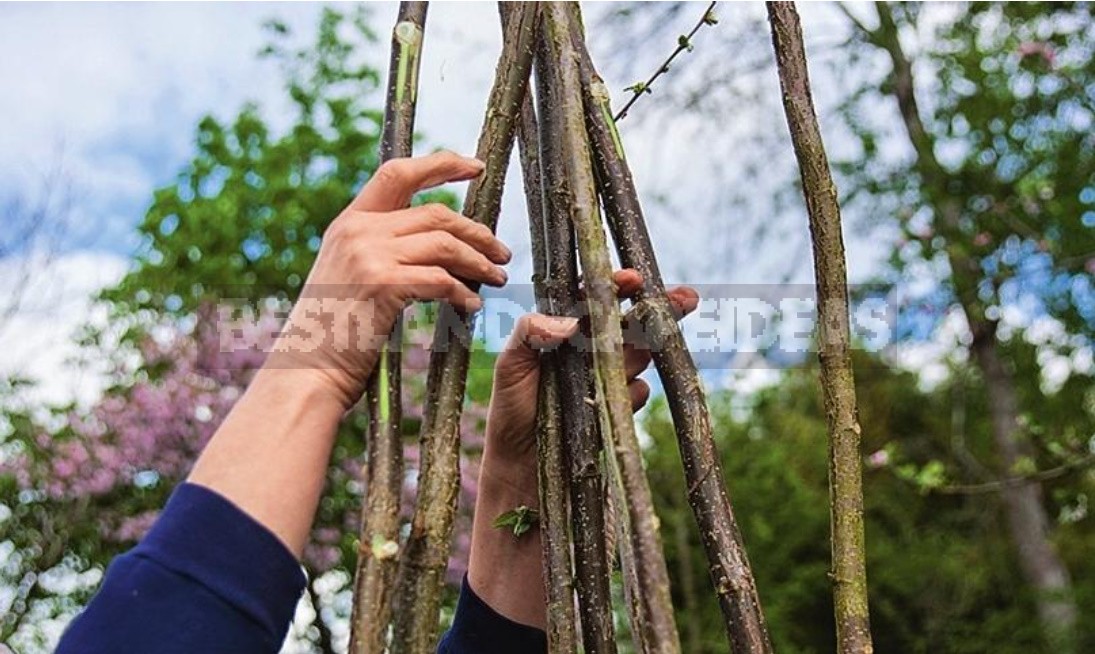
3. Tie the upper ends of the sticks tightly with a rope at the desired height. Do not make a bow, because we will later disguise the rope with thin twigs.
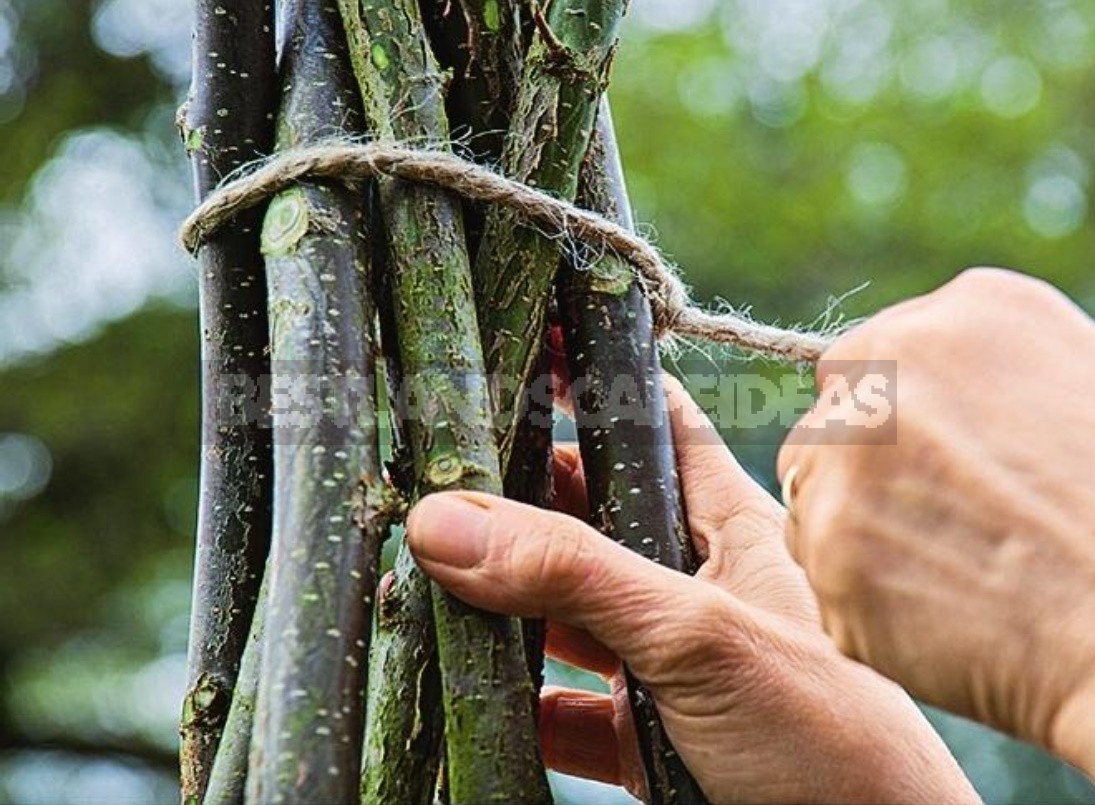
4. Take 3-4 rods and braid the frame with them, simultaneously twisting them with each other. The thinner and fresher the vine, the easier it is to do this work.

5. Weave the spiral in this way almost to the top of the frame (to the place where it is simply impossible to weave further). At the same time, try to leave the same distance between the turns.
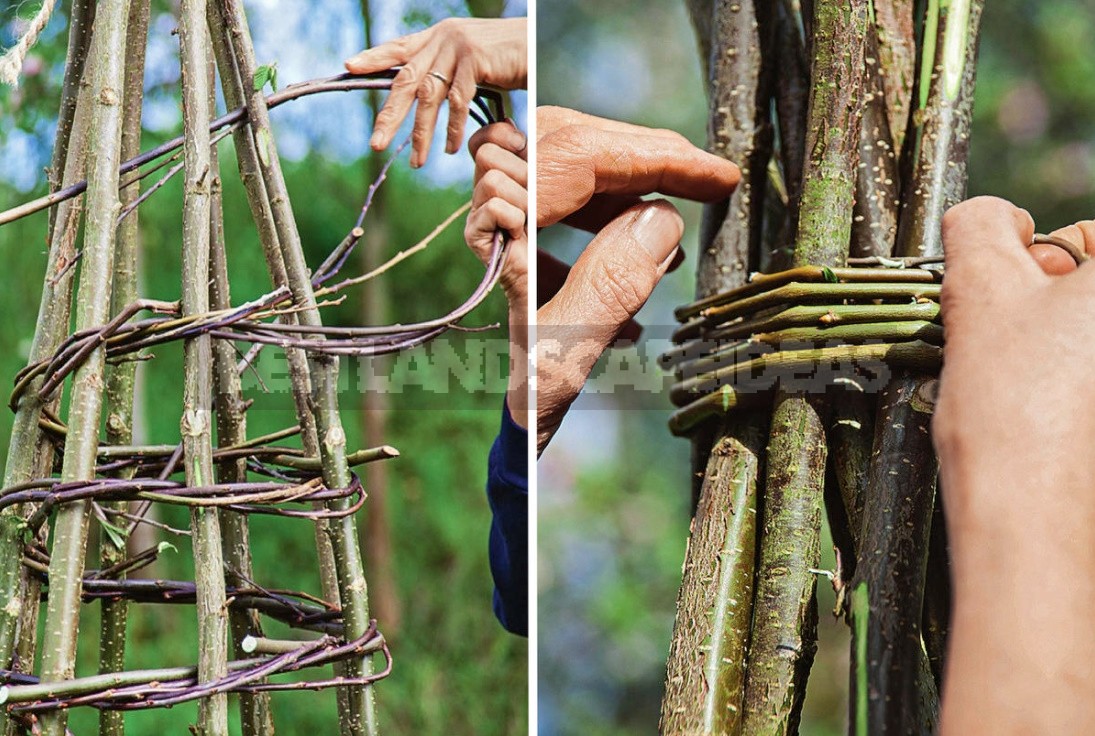
6. Shorten the ends of the vine to the same length. The trimmings can be used immediately — they disguise the rope at the top of the structure. To do this, wrap the twigs over the rope in several turns and fix it.
7. Cut all the branches at the same height. Now you can remove the finished obelisk from the wooden base. If the frame is tightly braided with a vine, nothing will shift. Use the board to make subsequent obelisks.
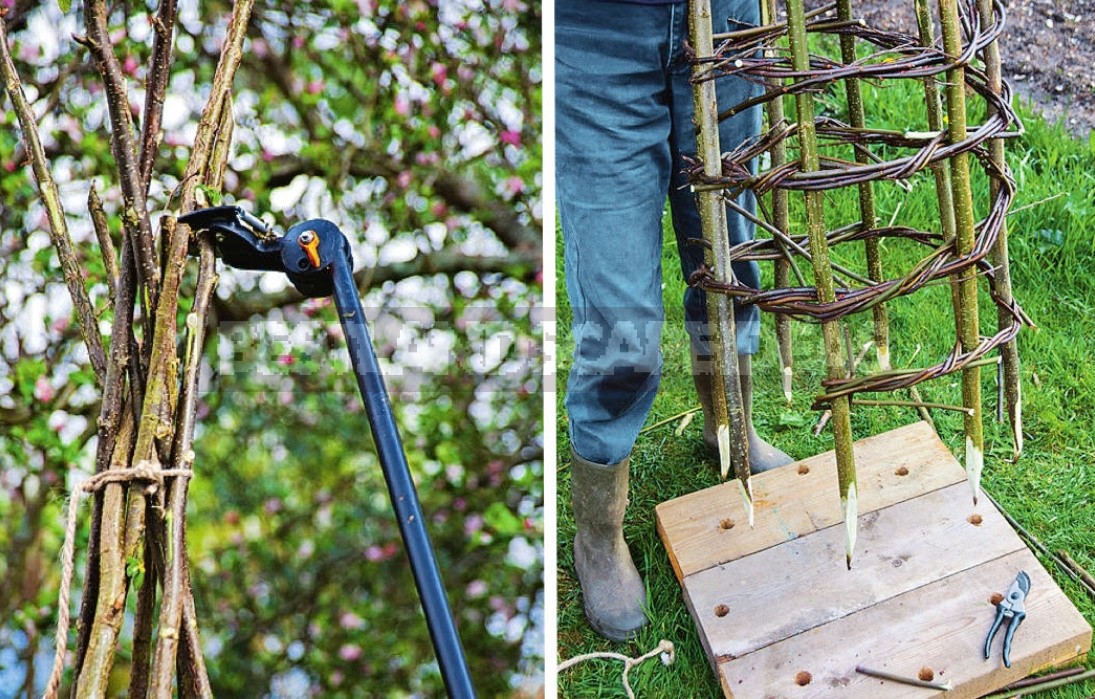
8. Install the obelisk at the selected location. At the same time, press the pointed ends of the frame to the place where the weaving begins. Make sure that the obelisk is standing straight. It can be used as a support for a climbing plant or not to green it, but to use it in the garden as a spectacular accessory.
What else can you make from a vine
In the photo on the left: a charming tunnel made of willow twigs will quickly turn green if the branches are fresh. To do this, they must be cut and watered well at first. On the right: the support for peas is made of hazel twigs. It is both practical and decorative.
